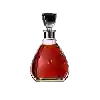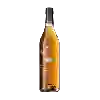
Winery Le DominicainBanuyls Vendanges Manuelles
This wine generally goes well with poultry, beef or rich fish (salmon, tuna etc).
The Banuyls Vendanges Manuelles of the Winery Le Dominicain is in the top 90 of wines of Banyuls.
Food and wine pairings with Banuyls Vendanges Manuelles
Pairings that work perfectly with Banuyls Vendanges Manuelles
Original food and wine pairings with Banuyls Vendanges Manuelles
The Banuyls Vendanges Manuelles of Winery Le Dominicain matches generally quite well with dishes of beef, rich fish (salmon, tuna etc) or shellfish such as recipes of chickpeas spanish style, sushi cake or shrimp and zucchini with curry and coconut milk.
Details and technical informations about Winery Le Dominicain's Banuyls Vendanges Manuelles.
Discover the grape variety: Hegel
German, intraspecific cross obtained in 1955 between helfensteiner and heroldreber by August Karl Herold (1902-1973) at the Weinsberg Research Institute. With these same parents he also obtained the dornfelder. One can meet the Hegel in Switzerland, Belgium, Germany, ... completely unknown in France.
Informations about the Winery Le Dominicain
The Winery Le Dominicain is one of of the world's greatest estates. It offers 26 wines for sale in the of Banyuls to come and discover on site or to buy online.
The wine region of Banyuls
Banyuls wines come from the South-eastern Part of Roussillon, in the south of France, in the lower Pyrenees, a few kilometres from the Spanish border. These naturally Sweet wines are consumed both as an aperitif and as a dessert. They come in a wide range of hues, from GoldenGreen (Banyuls Blanc) to Amber (Banyuls Ambré) to the intense garnet of the standard Banyuls Rouge. Unusually among the natural sweet wines of France, all Banyuls wines are made primarily from Grenache grapes of various colors.
The wine region of Languedoc-Roussillon
Languedoc (formerly Coteaux du Languedoc) is a key appellation used in the Languedoc-Roussillon wine region of southern France. It covers Dry table wines of all three colors (red, white and rosé) from the entire region, but leaves Sweet and Sparkling wines to other more specialized appellations. About 75% of all Languedoc wines are red, with the remaining 25% split roughly down the middle between whites and rosés. The appellation covers most of the Languedoc region and almost a third of all the vineyards in France.
The word of the wine: Bleeding
Old practice for red wines. As soon as the vat is filled with grapes, the tap is opened. A sweet but clear juice escapes from the vat (it can also be used to make rosé). The colour and density of the juice is enhanced, but it should not be overdone. Rarely more than 10% of the volume of a vat, otherwise you risk losing fruit and bringing in bitterness.














